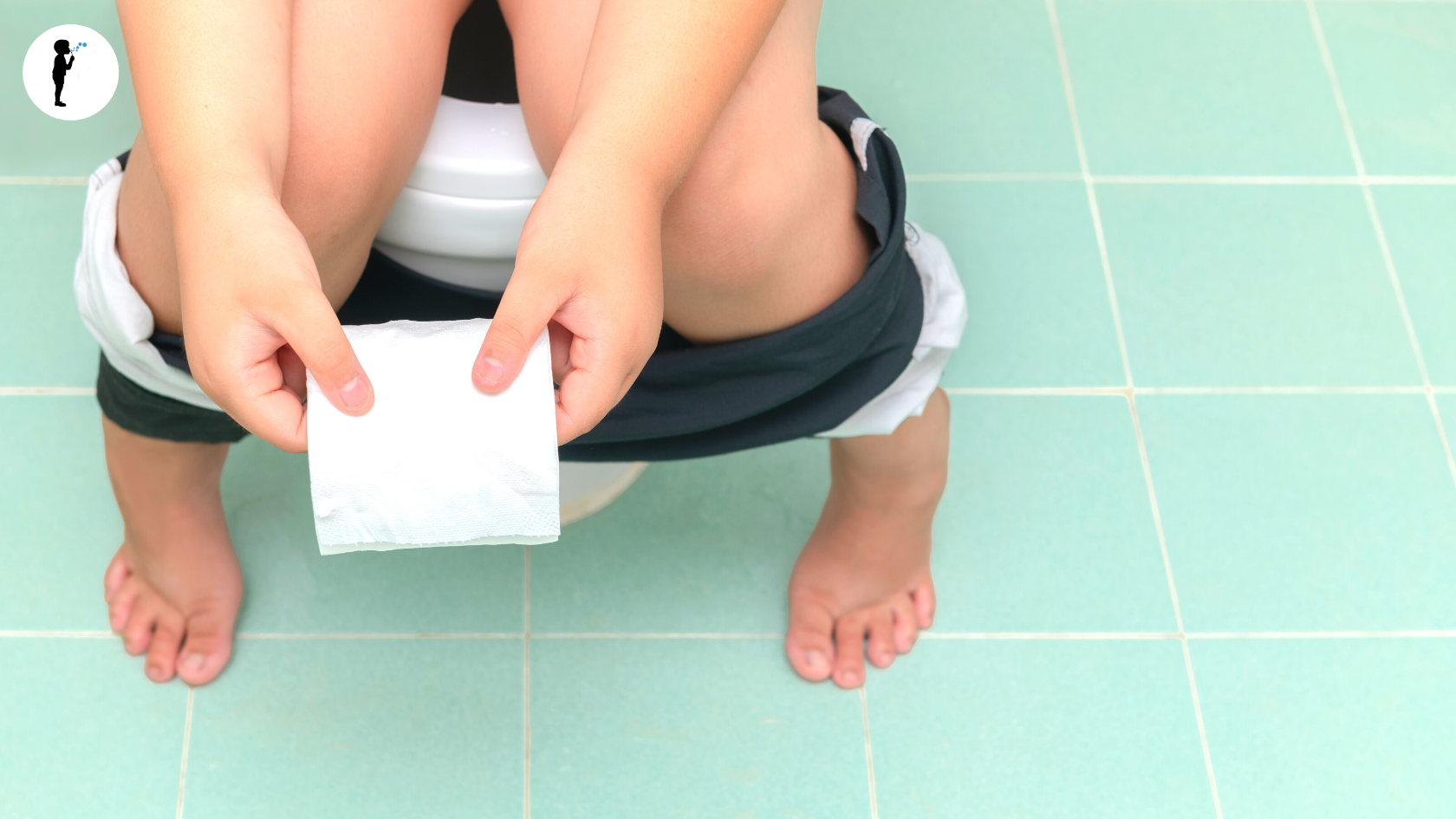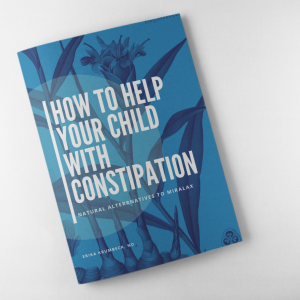
How physical therapy can help constipated children
Hi! My name is Rachael Herynk DPT, and I am a physical therapist who specializes in pelvic health. When I work with kids, it is usually to help with constipation, soiling, and leakage.
Kids aren’t leaking pee and poo on purpose.
It is important to understand that most of the time, kids aren’t leaking poop and pee on purpose – it usually has to do with constipation. When there is a lot of poop in the rectum, it pushes on the bladder and makes it easier for the bladder to leak. It also means liquid stool can leak around the poop in the rectum and cause soiling. I love “The Poo in You” video because it shows how this happens. Understanding is so important to helping manage constipation!
The Pelvic Floor
Our pelvic floor muscles play a role in constipation, and that’s where physical therapy can be helpful! My job is to help people develop healthy pelvic floor muscle function. Pelvic floor muscles are the muscles that go from the pubic bone to the tailbone. In order to have a bowel movement, the pelvic floor muscles need to relax. When pelvic floor muscles are held or contracted (often kids do this to delay urination or bowel movements while playing), it is harder to sense the urge to poop. It is easy for kids (and grown-ups too) to get in the habit of contracting these muscles too much. That means that poop will sit in the rectum longer. The longer it sits, the more water it loses, and the harder it is to pass.
This article has a great illustration of where the pelvic floor muscles live in our bodies.
Biofeedback
Physical therapists use biofeedback to help kids learn how to relax and contract their pelvic floor muscles properly. Biofeedback is a little machine that hooks up to stickers. The stickers then go on the pelvic floor muscles. The activity of the muscles is then displayed on a screen. When our muscles contract and relax, the lights on the screen go up and down. It takes a few times for kids to get the hang of it. Biofeedback is one of the more evidence-based treatments recommended to help kids with constipation.
Belly Breathing
I love teaching kids how to belly breathe. Good breathing is so important. When we breathe into our bellies (instead of our chests), it helps to calm our bodies and relax the pelvic floor muscles. That is important so that kids can be good listeners to their bodies and help sense the urge to poop!
Other helpful tricks
Other treatments in physical therapy might include abdominal massage and application of gentle electrical currents to help stimulate peristalsis or gut movement.
There are lots of helpful things that grown-ups can do to help kids with constipation. Having available lots of fruits, vegetables, and plenty of fluids is excellent! It helps to move poop through the gut and keep poop soft so that it is easier to pass.
I am a big fan of kids using a squatty potty or toileting ladder so that their feet are supported when they sit on the toilet. Keeping knees higher than the hips helps relax our pelvic floor muscles so that it is easier to poop.
Consider pelvic floor physical therapy for your constipated child.
If your child struggles with constipation, please reach out! You can ask your care providers if pediatric pelvic floor physical therapy might help.
For more information on a naturopathic approach to constipation check out our e-book: How to help your child with constipation: natural alternatives to Miralax
Sources
- Continence Foundation of Australia (photos of pelvic floor muscles and toileting posture)
- Bharucha AE, Wald A, Enck P, Rao S. Functional anorectal disorders. Gastroenterology. 2006; 130:1510-1518.
- Brown C. Physiotherapy for anorectal disorders. In: Carriere B, Feldt CM. eds. The Pelvic Floor. New York: Thieme; 2006.
- Chiarioni G, Whitehead W. The role of biofeedback in the treatment of gastrointestinal disorders. Gastroenterol Hepatol. 2008; 5: 371-382.
- Clarke MC et all. Transabdominal electrical stimulation increases colonic propagating pressure waves in paediatric slow transit constipation. J Pediatr Surg. 2012. Dec: 47(12):2279-84.
- Harrington KL, Haskvitz EM. Managing a patient’s constipation with physical therapy. Phys Ther. 2006;86:1511-1519.
- Harris MS. Evaluation and treatment of constipation. International Foundation for Functional Gastrointestinal Disorders. 2012. Constipation (118).
- Hodges, Steve. Cited on Parents.com (Chart of stool consistency)
- Longstreth GF, Thompson WG, Chey WD, Houghton LA, Mearin F, Spiller RC. Functional bowel disorders. Gastroenterology 2006; 130: 1480-1491.
- Rao SS. Constipation: Evaluation and treatment of colonic and anorectal motility disorders. Gastroenterology Clinicals North America. 2007; 36:687-711. (a)
- Rao SS, Go JT. Treating pelvic floor disorders of defecation: management or cure? Curr Gastro Rep. 2009; 11:278-287.



